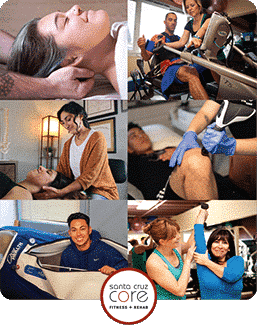Surgery is the common treatment for herniated discs but there are good reasons to consider other surgery alternatives, like prolotherapy, before going under the knife for back pain.
Intervertebral discs are the pads of fibrous cartilage that are found between vertebrae along the spine. These discs are like jelly donuts with a gel-like substance in the middle (called the nucleus pulposus) that is surrounded by a dense fibrous tissue (called the annulus fibrosus).
A herniated disc in one whose inner gel bulges out through a weak or ruptured segment of the annulus. The bulging jelly can exert excess pressure on surrounding soft tissues of the spine and spinal nerves (a pinched nerve), irritating them and causing pain. A herniated disc can happen anywhere along the spine but is more common in the lower (lumbar) spine.
Potential Causes
A disc can herniate for many reasons including blunt trauma, stretch injuries, gradual wear-and-tear, and abnormal mechanics of the spine. Structures of the spine naturally deteriorate with age, the intervertebral discs themselves might lose volume, and supporting ligaments might lose tightness. Stretch injuries and blunt trauma are more likely to cause a disc to herniate when deterioration is already present.
Other factors including obesity, a sedentary lifestyle, and genetic predispositions can also play a role. Being obese places excess weight and stress on the lower back and sedentary lifestyles lead to weak core muscles support the spine- both of which increase the risk for a disc herniation.
Studies by Patel Et al. showed that genetic predispositions also play a role in disc herniations as these are more likely when there is a family history of the ailment(2011).
Unresolved stretch injuries of spinal ligaments can also be a factor as these lose tightness and their ability to stabilize the spine. Over time, unresolved stretch injuries can lead to excessive movement in segments of the spine which may aggravate the deterioration of intervertebral discs and supporting soft tissues. Disc herniations will cause pain and other symptoms depending on their severity and location along the spine.
Disc herniations that exert pressure and irritate roots of the sciatic nerve, for example, lead to symptoms of radiculopathy (“pinched nerve”) like radiating pain down a leg and buttocks. Other times, disc herniations can exist without eliciting any pain or other symptoms.
Treatment and Management
In most cases, disc herniations heal on their own within a few weeks using conservative treatments like non-steroidal inflammatory drugs to manage acute pain. While the majority of cases of disc herniation heal on their own, there is a risk of developing chronic low back pain, especially if there is ligament laxity. Other modalities like corrective exercise, massage, and acupuncture may also help manage the pain especially when it is chronic.
Surgical treatment is also available but it is considered as a last resort. While modalities do exist for the management of chronic low back pain from a herniated disc, these tend to only treat symptoms, not completely heal the problem.

Another option to consider when it comes to lumbar disc herniations is prolotherapy, an injection-based regenerative treatment. There are 3 types of surgery free regenerative treatments for herniated discs available at CORE: Dextrose prolotherapy, Platelet Rich Plasma, and Stem Cell.
Prolotherapy treatments inject substances known as proliferators, which induce local inflammation and healing of damaged soft tissues like tendons and ligaments. This is because prolotherapy injections lead to the release of growth factors that recruit healing mechanisms to the site of injection to illicit repair.
Fibroblasts (which make collagen), for example, secrete more collagen in response to prolotherapy. Since collagen shrinks in size as it matures, lax ligaments regain tightness and their ability to stabilize skeletal structures. When loose spinal ligaments are behind a disc herniation, prolotherapy is the ideal conservative treatment because it does not mask the symptoms, but fixes the root cause.
Unlike surgery, prolotherapy injections are minimally invasive, a lot less expensive, and less taxing on the body’s mechanical functions. If you have unresolved low back pain from a disc herniation, consider prolotherapy and visit give us a visit at Santa Cruz CORE.
Sources:
- Patel, A. A., Spiker, W., Daubs, M., & Brodke, D. (2011, February 2). Evidence for an inherited predisposition to lumbar disc disease. Retrieved from https://pubmed.ncbi.nlm.nih.gov/21266637/
- Alderman, D., D.O. (2011, December 27). Prolotherapy For Low Back Pain. Retrieved from https://prolotherapy.com/Alderman_Prolotherapy for Low Back Pain 2007.pdf









Leave a Reply